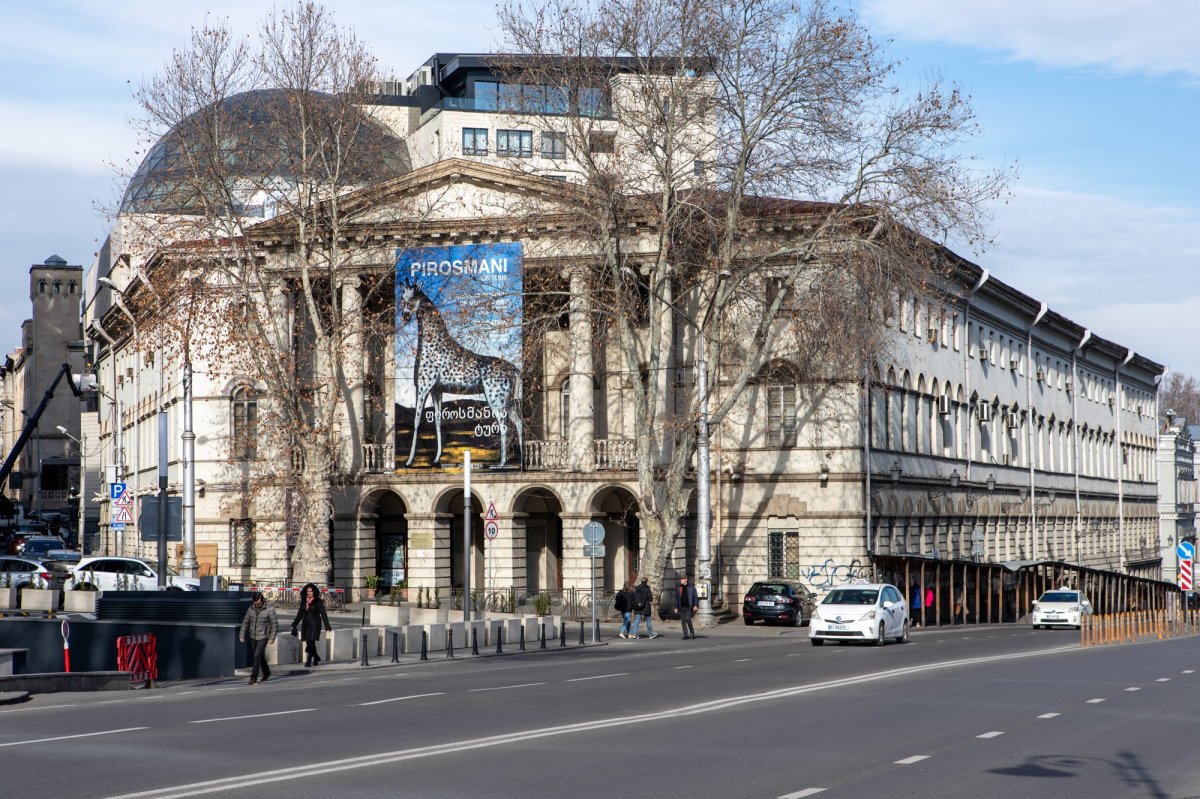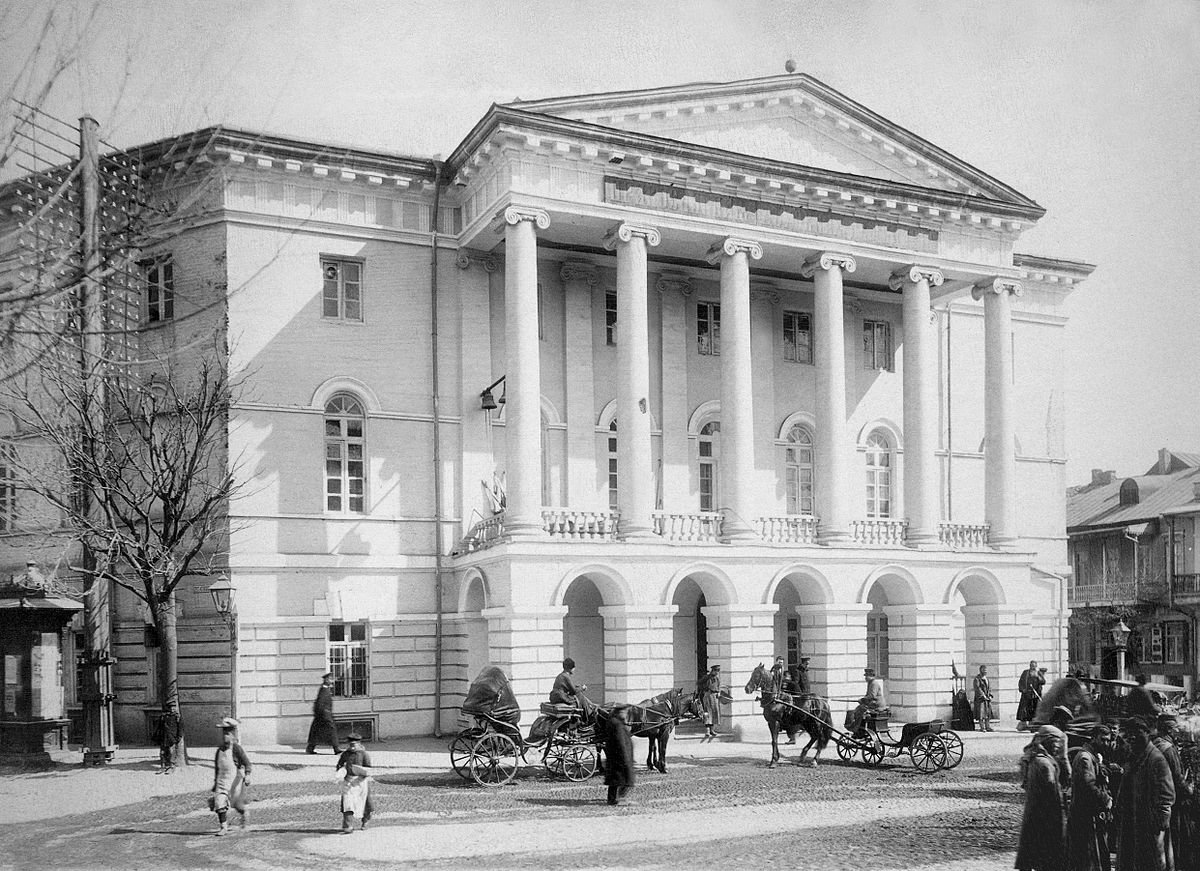
Information in details
The building of Shalva Amiranashvili Museum is one of the outstanding examples of Tbilisi architecture and the most important example of early classicism, of which there are only a few surviving examples in the city. The building, precisely because of its historical memory, has the highest artistic-architectural value, it has the appearance of a kind of "museum exhibit", which has been granted the status of a monument of national importance.
In the 20s of the 19th century, the first Gild merchant, philanthropist, and industrialist Iacob Zubalashvili bought a fairly large plot of land in the centre of the city from nobleman Turkestanishvili. The plot of land, in a rather difficult location, included the space between Yerevan Square and Saldat Bazaar, which was bordered by Pushkin Street on the south side, Loris Melikov Street on the west, Grafi Street on the north, and Grafi Street on the east. The shape of the plot of land between the streets was determined by the existing network of streets, which also determined the plot's outline. By the 1930s, Iacob Zubalashvili decided to build a hotel in the mentioned area, which he ordered from the architect Giuseppe Bernardazzi, who was invited to Tbilisi. Giuseppe Bernardazzi (1788-1840), an architect and topographer of Italian origin, arrived in Georgia with his brother, stonemason and architect Giovanni (1782-1842). Zubalashvili commissioned Bernardazzi to build a hotel on his plot of land, which the "Palace" hotel was located after. In 1840, it was purchased by the Exarchos and a spiritual seminary was organized in it. In 1921, the building of the former theological seminary was returned to its primary function, and the "Palace" hotel returned to it. In 1950, reconstruction works were carried out in the building, after which the Museum of Art of Georgia was located there.
A three-story building with a trapezoidal plan occupies an entire quarter between three streets. Its main narrow and symmetrical facade, with a pointed portico, faces Pushkin Square. The first floor of the portico, crowned with a triangular pediment, is represented by an arch, which is supported by a colonnade decorated with gigantic Ionic capitals on the second floor. A balustrade bordering the terrace is placed between the columns. The arched openings leading to the terrace are decorated with plain pediments. Between the openings, there are also pilasters decorated with giant Ionic capitals, which seem to repeat the image of a portico. On both sides of the portico, on all three floors, there are windows one by one. They, like L. Gudiashvili Street and the monumental facades facing A. Pushkin Street, are arranged in rows, the pediments are decorated with keystones and plain, arched pediments surrounded by a single cornice. False windows can be found in abundance on the facade on the side of Pushkin Street. The square windows located on the third floor are not decorated. An alternating row of rectangular and triangular pediments is attached to the windows decorated with arc pediments on the facade along Pushkin Street. On the mentioned side, due to the slope of the terrain, an additional floor is added, on which plain windows are placed. The rear facade of the building, facing the street, is represented by plain, symmetrically distributed windows of different sizes and are false windows. A profiled cornice with a frieze divided by metopes and triglyphs completes the structure resting on the rusticated first floor. The described large-scale building has a well-thought-out facade, the artistic solution of which is likely to have been greatly influenced by its function. The rhythmicity created by the alternation of different kinds of window decorations adds strength to the exterior along with diversity. The facade facing Pushkin Street has a heavily rusted first floor and the remaining wall planes between the windows make it not only large-scale but also monumental. In the expositions and deposits of the museum, there are works of art from the Middle Ages to the 20th century, a special place is given to the gold fund (treasure), where unique artefacts of Georgian goldsmithing and partition enamel of the VIII-XIX centuries (VIII-XV centuries) are exhibited, ritual purpose church items, delicate samples of artistic embroidery, as well as samples of medieval Georgian architecture, monumental painting and mosaic, sculpture, icon painting, wood carving. The museum preserves a collection of works by Niko Pirosmanashvili (146 canvases), works by Gigo Gabashvili, Jacob Nikoladze, Lado Gudiashvili, Davit Kakabadze and other Georgian artists of the 18th-19th centuries from Russia, various European countries (Lucas Cranach, Chardin, etc.) and the richest collection of art of the peoples of the Eastern countries, including Qajar portraits.


 თბილისი, Pushkin street N2-4
თბილისი, Pushkin street N2-4
 41.6951471, 44.8020714
41.6951471, 44.8020714







